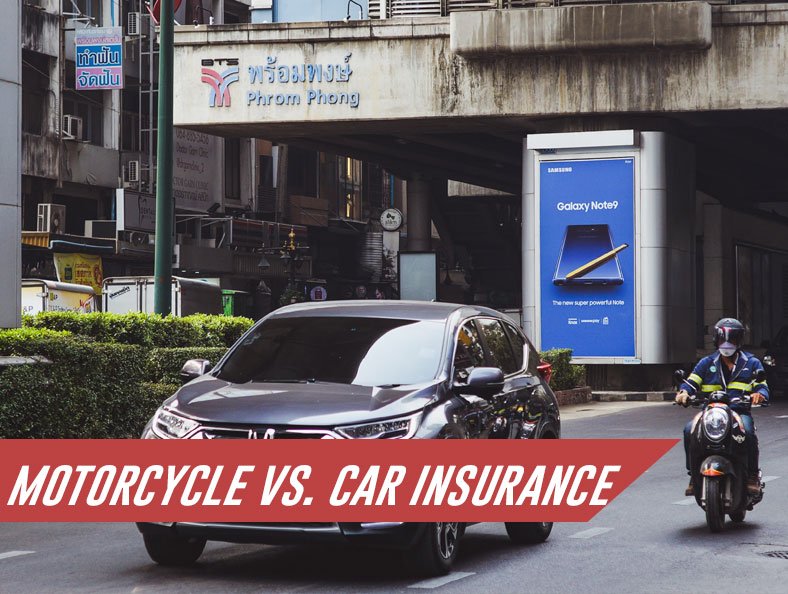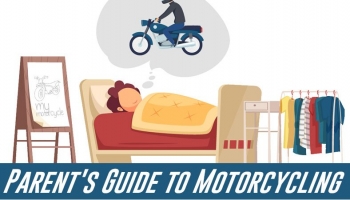Motorcycle Insurance Versus Car Insurance – Which is Cheaper?

Do you know the primary difference between motorcycle and car insurance? It’s a common misconception thinking the two are the same although they’re not.
Both forms of insurance cover similar basic stuff while the claims process is also quite identical. Still, there are a few major differences you should know and understand.
It’s critical to know this stuff if you have one of the two vehicles or looking to buy it. It shows which is cheaper to run after a while which is an ongoing debate. Take some time to read the article below as you’ll find all the important info on both forms of insurance.
Which Insurance is Cheaper?
Certain insurances cost more and depend on a vast range of different factors. The more moderate is the vehicle, the less you’ll pay for insurance. This means that a sports car is probably more expensive to insure than a minivan. The same thing goes for a motorcycle.
In essence, this means you’ll pay more to insure a sleek, new ride than you would your old, less attractive bike. This is because new and shiny motorcycles are more likely to get stolen than other bikes that aren’t in such great condition.
Also, the more the provider has to pay in the case of your vehicle being stolen or wrecked, the more your policy will cost. It goes the same for motorcycles and cars.
Other factors affect the numbers as well. For example, insuring both a car and a bike is more expensive if you live in a sketchy neighborhood than if you live in a safer area.
States with the Highest and Lowest Motorcycle Insurance Cost
States with the lowest costs have rates of at least 32% lower than the average price of insurance in the USA. Most of them are located in Great Plains and Midwest and have some of the highest rates of registered bikes per person.
The five states with the cheapest insurance costs are North Dakota, Iowa, Oklahoma, New Hampshire, and Wyoming. The cost between them ranges from $283 to $354 on average.
Those with the most expensive insurance costs are more afar from one another. While in New Hampshire there’s a bike for every 17 people in the state, in Louisiana, there’s a bike for every 67 people.
Other than Louisiana, countries such as Florida, Texas, Michigan, and Delaware also have the most expensive insurance rates. The costs there range from $689 to $896 on average.

Read the Fine Print
As with every deals and contract, it’s crucial that you read the fine print in order to ensure you’re comfortable with the offer.
Some providers offer discounts that can help bring the overall cost of insurance for motorcycles. Most discounts are for safety features such as anti-lock brake system (ABS) and anti-theft systems.
An ABS saves lives by preventing accidents which is one of the major reasons why provides offer discounts for the feature. In the USA only, the rate for fatal crashes is 31% lower for bikes that feature ABS than those that don’t.
The feature is even more important if you’re a beginner. Claims during the first three months of policy drop to 30% with ABS compared to a similar model that doesn’t have the feature. The second three months you have about 19% of the same advantage.
Keep Medical Expenses in Mind
The insurance covers injuries, but the possibility that they will happen is higher in some cases. For example, those who don’t wear a helmet are twice as likely to suffer a traumatic brain injury in a crash. In the case of a brain injury, medical costs are about 13% higher.
This is quite interesting given the fact that motorcycles make up 3% of all registered vehicles but are involved in 14% of traffic fatalities. Statistics show that more than half of fatally injured riders in 2011 weren’t wearing a helmet.
It leads us to admit that motorcycles are simply more dangerous than cars. This is something even the most enthusiastic riders will confess and something you should keep in mind when thinking about insurance.
If you’re interested in a bike, you should consider medical payments coverage along with the insurance. This covers your immediate medical expenses in case you’ve had an accident regardless of whether you’re to blame or not. It’s a good option if you don’t have proper health insurance.
Medical payments will cover stuff like dental expenses, funeral expenses, ambulance fees and several other stuff health insurance doesn’t cover. It’s also a good idea to carry uninsured and underinsured motorist coverage.
The Age Factor
In addition to your driving history, the city you live in and the amount of coverage you purchase, companies also calculate the cost depending on your age and years of experience.
This means the same car or a bike might cost less for a 50-year old driver than for someone who’s just turned 18 years.
New riders have less experience which is why insurance providers estimate that they’re more likely to be involved in an accident. The same goes for 19-year old drivers and those twice as old but with no experience. Still, teens almost always pay higher motorcycle insurance premiums.

Additional Considerations
Are Motorcycles Cheaper to Buy and Operate?
This is true in most cases though it greatly depends on the kind of motorcycle you’re riding. Currently, you can buy a new Honda CBR 250R with anti-lock brakes for $4,199 while the 2015 Nissan Versa is the cheapest new car and costs $11,990.
Even if you decide to shop for a used vehicle, you won’t save up that much money. Bikes with less than 10,000 miles cost around $4,000. Some cars that cost as much are usually older and have over 100,000 miles.
Furthermore, motorcycles are also cheaper to operate since you can save a lot of money on gas. You might not wait in traffic as much, which will also make your full tank last a bit longer.
Whatever you’re spending on your car in terms of gas, you’ll probably spend less than half on a bike. Still, bikes also require maintenance, safety equipment and other stuff that easily adds numbers to the overall cost of riding.
Training Costs and Riding Gear
Training is crucial for new riders and even required in some states. It’s recommended you take the motorcycle endorsement class as early as possible so that you can be a safe and confident rider from day one.
Costs for training classes vary, but approximately $300 is an average number. Another few things you’ll have to consider are the critical pieces of your equipment.
The most expensive is probably a helmet with an average cost of $300 to $600 for a solid-quality model. Keep in mind that you’ll need two of those if you’re riding with a passenger.
The rest of your equipment might include gloves, boots, a jacket, and other leather pieces. Altogether, this stuff is approximately $600. Rain gear will add another $200 to the cost.
And while you’re at it, you might want to pick up a good jump starter so you aren’t stranded.
Maintenance
Maintenance is different than other, one-time expenses. It’s something you’ll have to keep on doing for as long as you plan on riding.
In most cases, bikes require more frequent maintenance than cars though that doesn’t mean the expenses are any bigger. On average, you’d spend about $138 a year even if you do some of the stuff yourself or get some help from a friend.
Keep in mind that tires also need replacing every 4,000 to 11,000 miles. They can cost up to $300 a piece for most sport bikes and about $100 for a cruiser. On average, motorcycle owners spend about $105 on tires every year.
All of that is only if you do regular maintenance. If not, repairs might be more expensive.
Some Things Are Easier With Four Wheels
Though riding a bike is more fun, having a car is sometimes a bit more convenient. The best thing would be to own both if you can afford it.
Imagine lousy weather, a horrible storm, wind and maybe even ice falling. This means poor visibility and difficult handling especially if you have a lightweight motorcycle. Surely, even driving a car in such extreme weather conditions is dangerous but not nearly as dangerous as riding a bike.
If you have to drive somewhere far, it might be better to opt for a car instead of a motorcycle. It’s easier to carry stuff in, and you can always use it for sleep. If you were with a motorcycle, you’d have to rent a room.
Bikes are quite convenient in terms of parking. You can take it in and out of your garage in a second, and you rarely have to worry about a parking place. However, buying a week worth of groceries is easier if you drive a four-wheeler.
Packing bags of stuff and large items is much easier in a car. Just think about whether it’s easier to carry a brand new Christmas tree on a bike or a car.
Still, don’t let this discourage you from riding a motorcycle. If you can’t afford both, you can always rely on your friend or a family member with a car to assist you in times of need.
Conclusion
As you see, insurance varies depending on so many things. The first thing to remember is that there are different policies and forms of insurance for cars and motorcycles. They’re not the same thing though they appear quite similar at first glance.
Consider the pros and cons of owning both vehicles in order to decide whether the costs pay off to you. Insuring a car might be more expensive in your case, but it’s probably worth it if you know you often carry lots of stuff.
It’s a subjective thing that depends on your age, years of experience as well as the type and condition of the vehicle of your choice.






